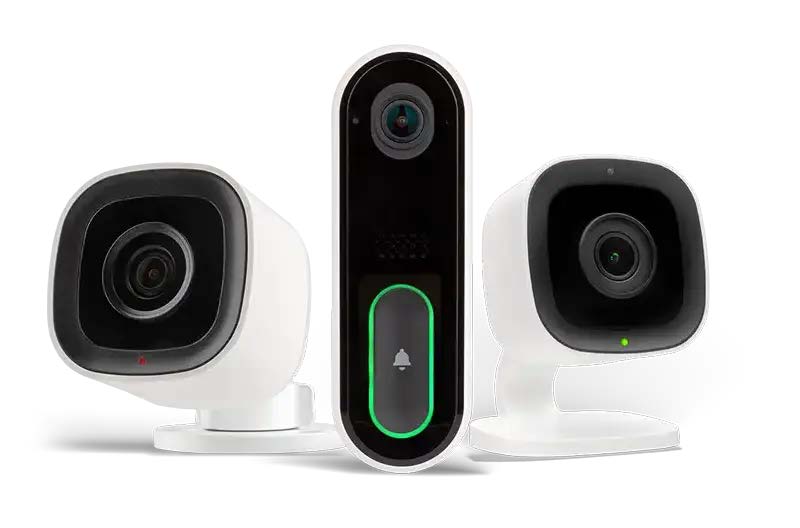Factors to Consider When Selecting a Security Camera
Introduction:
When it comes to protecting your home, investing in a reliable security camera is a wise decision. With a wide range of options available in the market, choosing the right one can be overwhelming. In this comprehensive guide, we will walk you through the essential factors to consider when selecting a security camera for your home. By the end, you’ll have the knowledge you need to make an informed decision and ensure the safety of your loved ones and property.
Purpose and Location
Before diving into the technical details, it’s important to define the purpose and location of your security camera. Ask yourself questions like:
- Do you need an outdoor security camera to monitor the perimeter of your property?
- Is an indoor security camera required to keep an eye on specific rooms or valuables?
- Are you looking for a security camera that can act as a deterrent?
Determining the purpose and location will help narrow your options and guide you toward the most suitable camera for your needs.

Types of Security Cameras
Security cameras come in various types, each designed for specific purposes. Here are the most common types:
1. Dome Cameras: Ideal for indoor use, dome cameras are discreet and offer up to 360-degree coverage area.
2. Bullet Cameras: These cameras are suitable for both indoor and outdoor use, with a long-range and visible presence, serving as a deterrent.
3. PTZ Cameras: Pan-Tilt-Zoom cameras are remotely controlled and provide the ability to pan, tilt, and zoom to capture specific areas of interest.
4. Wireless Cameras: These cameras offer flexibility in terms of installation and can be easily moved around. They rely on Wi-Fi connectivity for video transmission.
5. Outdoor Cameras: Specifically designed to withstand harsh weather conditions, outdoor cameras often come with enhanced durability and built-in protection against elements like rain and dust.
Resolution and Image Quality
The resolution and image quality of a security camera are crucial factors that determine the level of detail captured. The two most common resolutions are:
1. Standard Definition (SD): With a resolution of 480p, SD cameras offer decent image quality but lack finer details.
2. High Definition (HD): HD cameras provide a resolution of 720p, 1080p, or even 4K, delivering sharper and clearer images.
Consider the area you want to monitor and the level of detail you require to choose the appropriate resolution for your security camera.
Night Vision Capabilities
Effective surveillance doesn’t stop when the sun goes down. Night vision capabilities in a security camera are essential for round-the-clock monitoring. Look for cameras equipped with infrared (IR) LEDs that illuminate the scene, allowing the camera to capture clear footage in low-light or complete darkness.
Field of View
The field of view (FOV) refers to the area a security camera can capture. It is typically measured in degrees. A wider FOV enables the camera to cover more area, reducing blind spots. Consider the size of the area you want to monitor and choose a camera with an appropriate FOV to ensure comprehensive coverage.
Connectivity and Storage Options
Modern security cameras offer various connectivity options and storage methods. Here are a few common ones:
1. Wired Cameras: Wired cameras utilize a physical connection to a recording device or network. They offer stable and reliable video transmission.
2. Wireless Cameras: Wireless cameras connect to your home network via Wi-Fi, eliminating the need for physical cables. They provide flexibility in terms of installation; however, require a WiFi system to operate reliably.
3. Cloud Storage: Some cameras offer cloud storage options, allowing you to store video footage remotely. This feature provides convenience and protection against
data loss due to physical damage or theft.
4. Local Storage: Cameras with local storage options typically use an SD card or a Network Video Recorder (NVR) to store video footage. This configuration offers quick access to recordings but may be vulnerable to physical damage or theft.
Consider your preferences and requirements when selecting the connectivity and storage options that best suit your needs.
Additional Features and Integration

Lastly, consider additional features that may enhance your security camera system, such as:
Motion detection: Cameras with motion detection capabilities can send alerts or start recording when movement is detected, minimizing false alarms.
Two-way audio: This feature allows you to communicate with visitors or intruders remotely through the camera.
Mobile app integration: Cameras that integrate with mobile apps enable remote access and control, giving you the ability to view live feeds and receive notifications on your smartphone or tablet.
Smart home integration: If you have a smart home ecosystem, consider cameras that can integrate with your existing devices or voice assistants like Amazon Alexa or Google Assistant.
Conclusion:
Choosing the right security camera for your home requires careful consideration of various factors, including purpose, location, resolution, night vision capabilities, field of view, connectivity options, storage methods, and additional features. By understanding these factors and aligning them with your specific needs, you can make an informed decision and ensure the safety and security of your home and loved ones. Invest wisely and enjoy peace of mind knowing that your home is protected around the clock, contact BSG today 210-202-0525.

